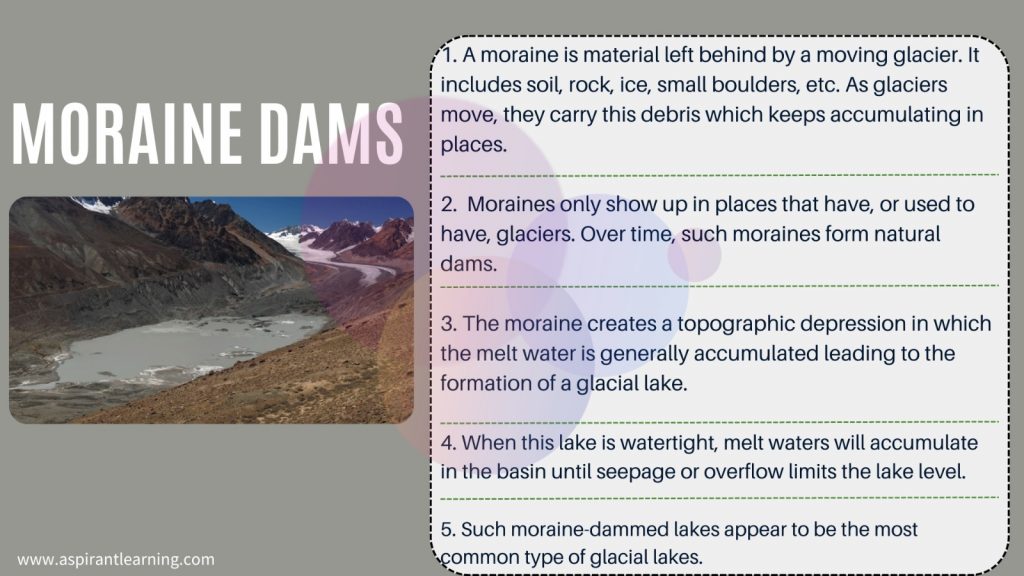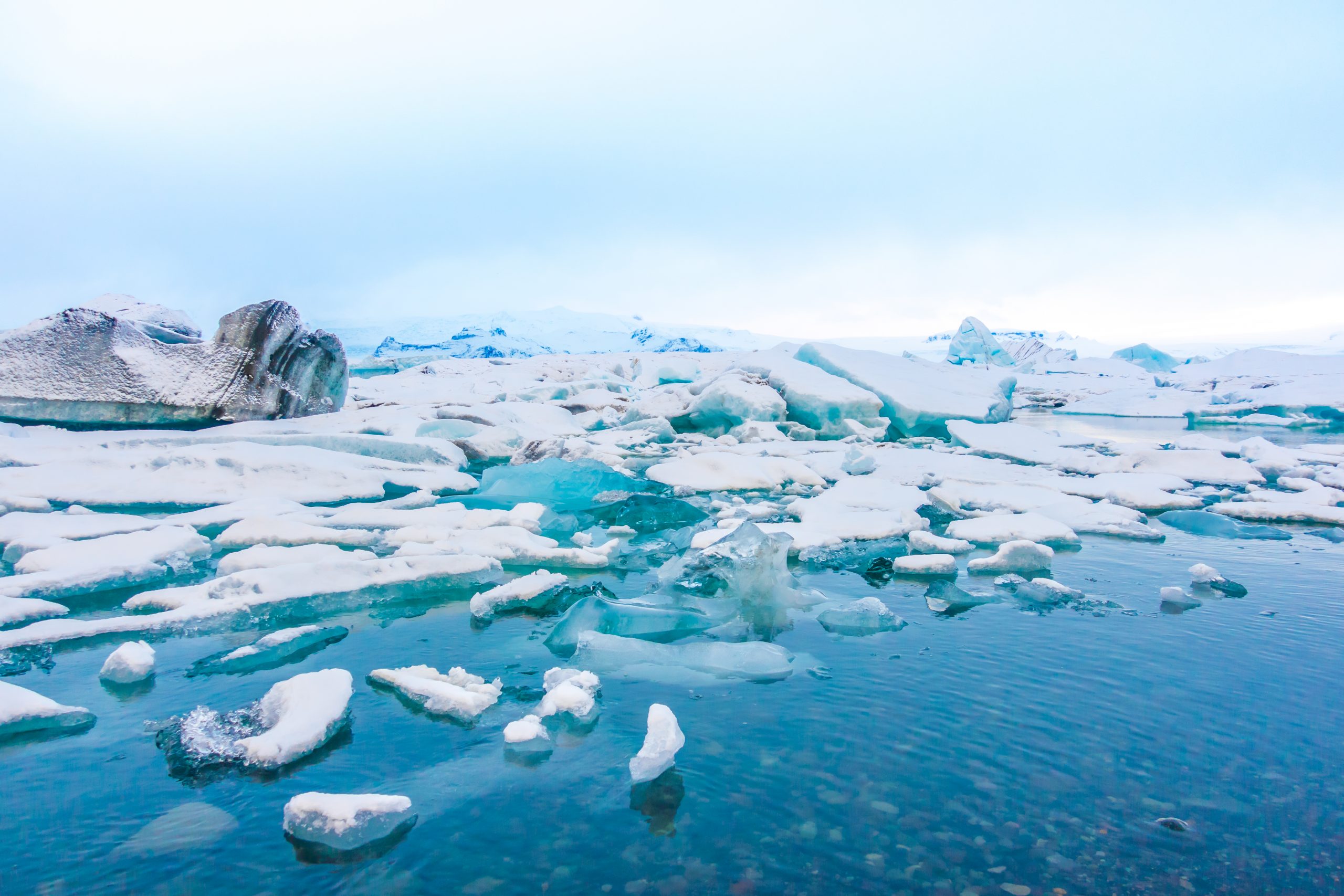News Highlights:
- According to a recent study published in Nature Communications, three million Indians live in areas where a Glacial lake outburst flood (GLOF) can happen at any time.
- Two million Pakistanis are also facing such a risk.
Key Takeaway:
- Globally, 90 million people across 30 countries live in 1,089 basins containing glacial lakes. Of these, 15 million (16.6 per cent) live within 50 kilometres of a glacial lake.
- The majority of the globally exposed population, amounting to 9.3 million (62 per cent), is located in the region of high mountain Asia (HMA).
Key Highlights of the Report:
- Indian conditions:
- In the Himalayas, 25 glacial lakes and water bodies have witnessed an increase in water spread area since 2009.
- There has been a 40% increase in water spread in India, China and Nepal, posing a huge threat to seven Indian states and Union Territories.
- Of these, six are Himalayan states / UTs: Jammu and Kashmir, Ladakh, Himachal Pradesh, Sikkim, Assam and Arunachal Pradesh.
- World scenario:
- Up to 15 million people face the risk of catastrophic flooding from glacial lakes, which could burst their natural dams at any moment.
- Those facing the greatest threat live in mountainous countries in Asia and South America.
- In Asia, around one million people live within just 10 km of a glacial lake.
- People living in India, Pakistan, Peru and China account for over half of those at risk globally.
- The most dangerous Glacial basins are found in Pakistan (Khyber Pakhtunkhwa basin), Peru (Santa basin) and Bolivia (Beni basin), containing 1.2 million, 0.9 million and 0.1 million people, respectively, who could be exposed to GLOF impacts.
- Glaciers across the Andes (S America) have undergone rapid deglaciation over the last 20 years in response to climate changes.
Glacial Lake Outburst Floods:
- About:
- A glacial lake outburst flood (GLOF) is a release of meltwater from a moraine-dam or ice-dam glacial lake due to dam failure.
- In simple terms, a glacial lake outburst flood refers to the flooding that occurs when the water dammed by a glacier or a moraine is released suddenly.
- They cause disastrous floods downstream and create a massive loss of lives and property.
- The rapid onset and high discharge of GLOFs means there is often insufficient time to warn downstream populations effectively and for effective action to be taken, particularly for populations located within 10-15 km of the source lake.
- features of GLOFs:
- The sudden release of water
- Rapid events lasting for hours to days
- Cause large downstream river discharges.
- Causes:
- Changes in the glacier volume can trigger these floods.
- Changes in the water level of the lake.
- Earthquakes
- Landslides
- Environmental pollutions
- Rise in temperatures due to anthropogenic activities causing quicker melting of glaciers.

GLOF in India:
- Overview:
- In February 2021, Chamoli district in Uttarakhand witnessed flash floods suspected to have been caused by GLOFs.
- The Kedarnath tragedy in 2013, which left about 5000 dead, was also related to a glacial lake breach.
- Continued glacier melt in the Himalayas has slowly spawned over 5,000 glacier lakes dammed by potentially unstable moraines.
- When such dams break, the resultant GLOFs can cause catastrophic societal and geomorphic impacts.
- Climate change:
- According to NDMA (National Disaster Management Authority), glacial retreat due to climate change occurring in most parts of the Hindu Kush Himalayas has given rise to the formation of numerous new glacial lakes, which are the primary cause of GLOFs.
- Mitigation:
- Identifying Potentially Dangerous Lakes by Field observations, Past event records, Geotechnical and geomorphologic characteristics of the lake/dam and Identifying other physical conditions
- Promoting the use of Synthetic-Aperture Radar imagery (a form of radar that is used to create two-dimensional images) to automatically detect changes in water bodies, including new lake formations, during the monsoon months.
- Developing a broad framework for infrastructure development, construction and excavation in vulnerable zones.
- Enhancing Early Warning Systems
- Training Local Manpower to mitigate
- Besides classical alarm infrastructure consisting of acoustic alarms by sirens, modern communication technology using cells and smartphones can complement or even replace traditional alarming infrastructure.
Pic Courtesy: Freepik
Content Source: Down To Earth



